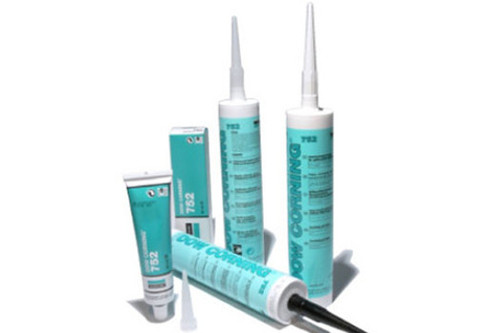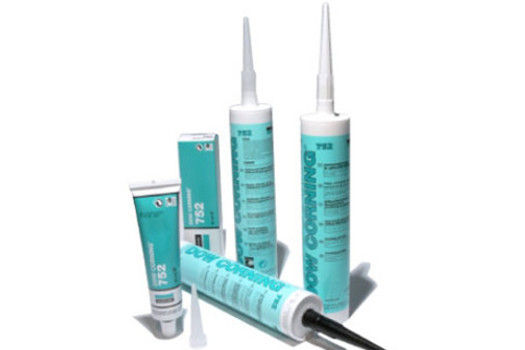

Dow Corning Sealants Solution
Product Details:
- Material Silicone
- Purity 88%
- Color Blue
- Physical State Liquid
- Click to view more
Dow Corning Sealants Solution Price And Quantity
- 378 INR/Unit
- 1 Unit
Dow Corning Sealants Solution Product Specifications
- Blue
- Silicone
- Liquid
- 88%
Dow Corning Sealants Solution Trade Information
- Cash in Advance (CID) Cash Advance (CA)
- 5-10 Unit Per Month
- 4-6 Week
- No
- All India
Product Description
SE4486 Thermally Conductive Adhesive :-
TYPICAL PROPERTIES Specification Writers: These values are not intended for use in preparing specifications. Please contact your local Dow Corning sales office or your Global Dow Corning Connection before writing specifications on this product.
Property Unit Value Viscosity cP mPa-sec Pa-sec 20000 20000 20
Tack-Free Time at 25 C minutes 4
Specific Gravity (Cured) - 2.59
Durometer Shore A (JIS) - 80
Tensile Strength
psi MPa kg/cm2
595 4.1 42
Elongation % 45
Unprimed Adhesion - Lap Shear (Glass)
psi MPa N/cm2
350 2.4 243
Dielectric Strength
volts/mil kV/mm
500 20
Dielectric Constant at 1 MHz - 4.8
Volume Resistivity ohm*cm 2E+14
Dissipation Factor at 1 MHz - 3E-03
Thermal Conductivity
btu/hr ft degF W/mK
0.919 1.59
Content of Low Molecular Weight (D4-D10)
wt% 0.001
DESCRIPTION :- One-part RTV-cure thermally conductive materials cure with moisture exposure to produce durable, relatively low-stress elastomer with a noncorrosive by- product. Long-term, reliable protection of sensitive circuits and components is important in many of todays delicate and demanding electronic applications. With the increase in processing power and the trend toward smaller, more compact electronic modules, the need for thermal management is growing. Thermally conductive silicones function as heat transfer media, durable dielectric insulation, barriers against environmental contaminants and as stress-relieving shock and vibration absorbers over a wide temperature and humidity range. In addition to sustaining their physical and electrical properties over a broad range of operating conditions, silicones are resistant to ozone and ultraviolet degradation and have good chemical stability. Good heat transfer is dependent on a good interface between the heat producing device and the heat transfer media. Silicones have a low surface tension that enables them to wet most surfaces, which can lower the thermal contact resistance between the substrate and the material.
SUBSTRATE TESTING To ensure maximum bond strength for adhesives on a particular substrate, 100 percent cohesive failure of the adhesive in a lap shear or similar adhesive strength test is needed. This ensures compatibility of the adhesive with the substrate being considered. Also, this test can be used to determine minimum cure time or to detect the presence of surface contaminants such as mold release agents, oils, greases and oxide films.
PROCESSING/CURING The one-part moisture-cure adhesives are generally cured at room temperature and in a range of 0 to 80 percent relative humidity. Greater than 90 percent of their full physical
properties should be attained within 4 to 7 hours depending on the product chosen. These materials are not typically used for highly confined or deep section cures. Materials will generally cure about 0. 5 inch (6.35 mm) per 7 days.




